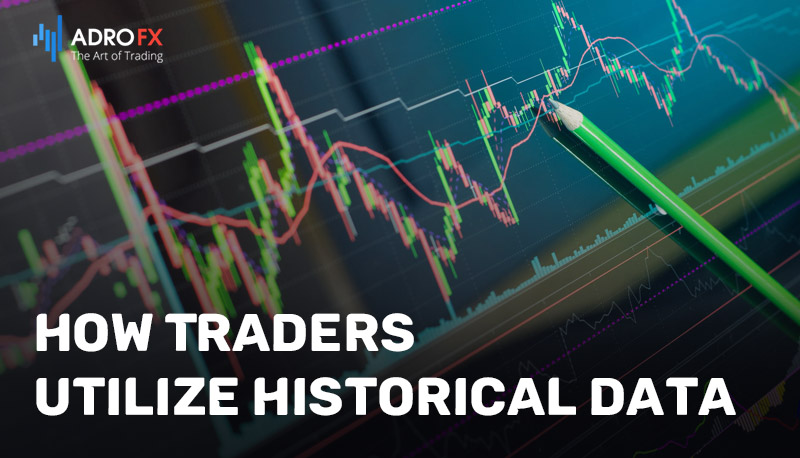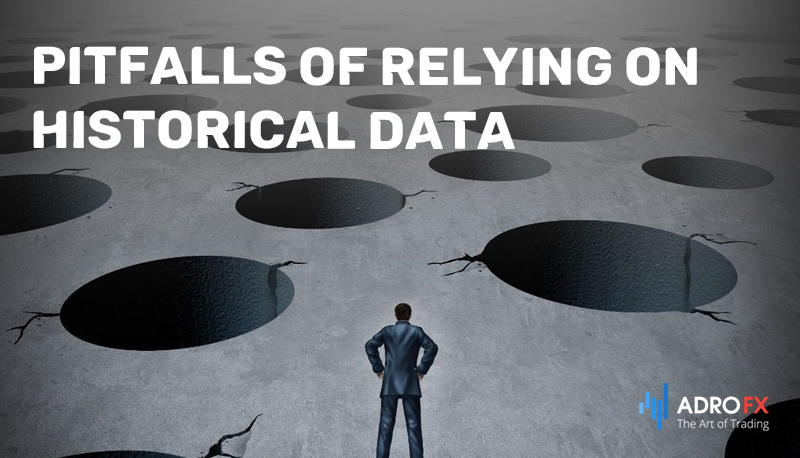Navigating the Past for Future Success in Trading: Using Historical Data To Make Informed Decisions in Trading

Welcome to the world where the past lays the foundation for the future – a realm where the intricacies of history hold the key to success in the dynamic realm of trading. In the fast-paced and ever-evolving landscape of financial markets, the ability to make informed decisions is an invaluable skill. This article delves into the art and science of leveraging historical data as a powerful tool to navigate the uncertainties of trading. As we embark on a journey through the annals of market history, we will explore how the analysis of past market trends, patterns, and behaviors empowers traders to anticipate, strategize, and ultimately thrive in an environment where knowledge truly is power. Whether you're a seasoned trader or just stepping into the enthralling world of trading, join us as we unravel the significance of using historical data to not only decipher the present but also illuminate the path toward more prosperous trading endeavors.
What Is Historical Data?
In the realm of trading, historical data serves as a treasure trove of insights, offering a comprehensive record of past market movements, trends, and behaviors. It encompasses a wealth of information, including price changes, trading volumes, and various indicators from previous trading sessions, days, weeks, months, and even years. This data provides traders with a unique vantage point, enabling them to uncover patterns, correlations, and anomalies that can illuminate the potential paths of future market movements. In this section, we delve into the essence of historical data, its sources, and its significance as an indispensable tool for making informed decisions in the complex world of trading.
It comes in various forms, each holding its own set of insights and implications. Traders and analysts rely on a diverse range of historical data types to decode market dynamics, gauge risk, and formulate strategic decisions. Here are the key types of historical data:
- Price Data
- Volume Data
- Time and Sales Data
- Order Book Data
- Volatility Data
- Technical Indicator Data
- Economic Data
- Correlation Data
- Sentiment Data
- Event Data
Understanding and analyzing these diverse types of historical data empowers traders to make well-informed decisions, adapt to changing market conditions, and devise strategies that align with their risk tolerance and objectives.

The Importance of Historical Data in Trading
Historical data serves as more than just a collection of past events – it is a powerful compass that guides traders through the intricate maze of uncertainty. Understanding the significance of historical data is essential for navigating markets with insight and confidence. Here's why historical data holds a pivotal role in trading:
Pattern Recognition
Historical data reveals recurring patterns and trends in market behavior. By identifying these patterns, traders can anticipate potential price movements and make informed decisions based on historical precedents.
Risk Assessment
Studying historical data allows traders to assess risk by examining how different assets and markets responded to varying conditions in the past. This knowledge enables traders to mitigate potential pitfalls and make calculated risk management strategies.
Strategy Development
Analyzing historical data aids in the formulation of trading strategies. Whether it's a trend-following approach, mean reversion strategy, or breakout tactic, historical data provides insights into the effectiveness of different strategies under diverse market conditions.
Confirmation and Validation
Historical data serves as a valuable tool for confirming or validating trading decisions. Traders can compare current market behavior with historical patterns to determine if their analysis aligns with past outcomes.
Learning from Mistakes
Reviewing historical data helps traders learn from past mistakes. By analyzing failed trades or incorrect predictions, traders can refine their strategies, fine-tune their approaches, and avoid repeating errors.
Decision-making Confidence
Having a historical perspective fosters confidence in decision-making. Traders armed with knowledge about how markets reacted to specific events or conditions are better equipped to make well-grounded choices, even in uncertain times.
Market Context
Historical data provides context for current market conditions. Understanding how markets evolved over time helps traders grasp the broader economic and market trends influencing their trading environment.
Backtesting
Historical data is crucial for backtesting trading strategies. Traders can simulate their strategies on past data to assess their potential profitability and refine their approaches before deploying them in real-time markets.
Long-term Planning
Traders with access to extensive historical data can make more informed long-term investment and trading decisions. Observing how markets performed over extended periods aids in crafting sustainable strategies.
Predictive Insights
While historical data doesn't guarantee future outcomes, it provides valuable insights into potential scenarios. By understanding historical trends and their underlying factors, traders can make more educated predictions.
In essence, historical data equips traders with the wisdom of hindsight, allowing them to navigate the present with a clearer understanding of the past. It transforms trading from a speculative endeavor into a strategic pursuit, enabling traders to leverage knowledge and experience to achieve their objectives in a dynamic and ever-evolving market landscape.

How Traders Utilize Historical Data
Traders harness the power of historical data as a cornerstone of their decision-making process. This rich repository of past market movements and behaviors serves as a guide, a reference, and a source of insights that inform trading strategies and actions. Here's a closer look at how traders leverage historical data to their advantage:
Pattern Recognition and Technical Analysis
Traders employ technical analysis to identify chart patterns, trends, and formations that have repeated in the past. By examining historical price data, they can recognize familiar patterns like head and shoulders, double tops, and flags. These patterns help traders predict potential price movements and plan their entries and exits accordingly.
Backtesting Strategies
Historical data is crucial for backtesting trading strategies. Traders simulate their strategies on past data to assess how they would have performed historically. This practice allows traders to refine their strategies, optimize parameters, and gain insights into potential profitability before executing them in real-time markets.
Risk Management
Analyzing historical data helps traders quantify risk and establish risk management strategies. By examining past drawdowns, market volatility, and asset correlations, traders can determine appropriate position sizes and Stop Loss levels to protect their capital.
Confirmation of Analysis
Before executing a trade, traders often compare their current market analysis with historical instances that exhibited similar conditions. If the historical data aligns with their analysis, traders gain a higher degree of confidence in their trading decisions.
Market Sentiment Assessment
Historical data provides a basis for evaluating market sentiment. Traders can analyze how markets reacted to past news releases, earnings reports, or geopolitical events to gauge potential market reactions to current events.
Identifying Market Regimes
By examining historical data, traders can identify different market regimes, such as trending, ranging, or volatile conditions. This understanding helps traders adjust their strategies to suit prevailing market conditions.
Understanding Volatility
Volatility is a critical aspect of trading. Historical volatility data helps traders anticipate potential price swings, allowing them to set appropriate profit targets and Stop Loss levels.
Economic and Fundamental Analysis
Traders incorporate historical economic data to gauge the impact of economic indicators on market behavior. By studying past reactions to events like interest rate changes or economic data releases, traders can better anticipate market movements.
Adapting to Changing Markets
Markets evolve over time and historical data aids in adapting to these changes. Traders can observe how certain strategies performed in different market conditions, enabling them to adjust their approaches when market dynamics shift.
Long-Term Investment Decisions
Investors also rely on historical data to make informed decisions. By analyzing long-term market trends and cycles, investors can allocate assets wisely and hold positions that align with historical performance over extended periods.
In the world of trading, historical data is not merely a tool; it's a foundation. Traders use it to study, strategize, adapt, and ultimately make decisions that are grounded in the accumulated wisdom of past market experiences. It's a way to bridge the gap between the uncertainties of the present and the potential opportunities of the future.

How to Utilize Historical Data Effectively
Leveraging historical data in trading requires more than just access to past market information – it demands a strategic approach and a keen analytical mindset. To harness the full potential of historical data and make informed decisions, traders need to follow a systematic and thoughtful process. Here's a guide on how to use historical data well:
Data Collection and Organization
Start by gathering reliable historical data from reputable sources. Ensure the data is accurate and covers the time frames and assets relevant to your trading strategy. Organize the data into a structured format that's easy to analyze.
Define Objectives and Strategies
Clearly define your trading objectives and the strategies you plan to implement. Different strategies require different types of historical data. Knowing your goals will help you focus on the specific data points that align with your strategy.
Select Relevant Time Frames
Choose the appropriate time frames for your analysis. Short-term traders might focus on hourly or daily data, while long-term investors might examine monthly or yearly data. The selected time frame should match your trading style and objectives.
Charting and Technical Analysis
Use historical price data to create charts and apply technical indicators. Look for patterns, trends, and support/resistance levels that have repeated historically. This analysis can guide your entry and exit points.
Backtesting Strategies
Before deploying a strategy in real-time markets, backtest it using historical data. Simulate trades using your strategy's rules and assess its performance over different market conditions. Pay attention to factors like win rate, drawdowns, and profitability.
Risk Management
Analyze historical data to determine how your chosen risk management strategies would have performed. Calculate optimal position sizes and set Stop Loss levels based on past volatility and drawdowns.
Review Historical Events
Examine historical events that impacted markets, such as economic releases or geopolitical developments. Compare how markets reacted to these events in the past, and consider how similar events might influence current conditions.
Adaptation to Changing Conditions
Identify historical instances when market conditions shifted. Understand how different strategies performed during those transitions. Use this knowledge to adapt your strategies as market dynamics evolve.
Maintain a Journal
Keep a trading journal where you document your analysis, decisions, and outcomes based on historical data. This journal will serve as a valuable reference and a source of learning from your experiences.
Combine with Fundamental Analysis
Integrate historical data with fundamental analysis. Study how economic indicators and news releases historically impacted markets. This holistic approach provides a comprehensive view of potential market movements.
Stay Open to Adaptation
Remember that historical data is a guide, not a crystal ball. Markets can deviate from historical patterns due to various factors. Stay open to adjusting your strategies based on real-time information.
Using historical data effectively requires a blend of technical expertise, analytical acumen, and adaptability. It's about using the lessons of the past to inform your decisions in the present while remaining flexible enough to navigate the uncertainties of the future. With careful consideration and a disciplined approach, historical data can become a potent tool in your trading arsenal.

Pitfalls of Relying on Historical Data in Trading
While historical data is a valuable resource, it's important for traders to approach it with caution and awareness of its limitations. Depending solely on historical data can lead to potential pitfalls that might hinder trading success. Here are some pitfalls to be mindful of when using historical data:
Data Bias and Incompleteness
Historical data might contain biases due to changes in market structure, trading technology, or regulatory environments. Additionally, data might be incomplete or inaccurate, especially when dealing with older or less liquid assets. Relying on flawed data can lead to misguided decisions.
Overfitting and Curve Fitting
While backtesting strategies, traders might unintentionally overfit their models to historical data. This occurs when a strategy is finely tuned to perform exceptionally well on past data but fails to generalize to new market conditions. Overfit strategies can lead to losses when applied to real markets.
Changing Market Dynamics
Markets evolve over time, and historical data might not account for new market participants, technological advancements, or regulatory changes. Strategies that worked well in the past might be less effective in today's market environment.
Black Swan Events
Historical data often fails to capture rare and extreme events, also known as black swan events. These events can significantly disrupt markets and cause unforeseen consequences that historical data cannot predict.
Survivorship Bias
Survivorship bias occurs when only successful assets or strategies are included in historical data. Failed assets or strategies that were delisted or discontinued are often excluded. This bias can lead to an overly optimistic view of potential returns.
Sample Size Issues
Limited historical data can lead to sample size issues, especially when testing strategies on shorter time frames. Small sample sizes might not accurately represent the broader market behavior.
To navigate these pitfalls, traders should approach historical data as one piece of the puzzle rather than the sole determinant of their trading decisions. Combining historical data with real-time information, fundamental analysis, and a healthy dose of critical thinking can lead to more well-rounded and informed trading strategies.
Conclusion
In the ever-evolving world of trading, historical data emerges as a beacon of insight, guiding traders through the complexities of financial markets. This journey through the intricacies of historical data has revealed its role as a dynamic tool, offering patterns, trends, and lessons from the past that inform our present and illuminate our future. From deciphering price movements to formulating strategies and managing risk, historical data serves as a compass that traders use to chart their course.
While the allure of historical data is undeniable, its limitations are equally significant. Traders must tread carefully, acknowledging biases, overfitting dangers, and the evolving nature of markets. The art lies in skillfully combining historical data with real-time intelligence, fundamental analysis, and a keen understanding of the ever-changing market landscape.

About AdroFx
Established in 2018, AdroFx is known for its high technology and its ability to deliver high-quality brokerage services in more than 200 countries around the world. AdroFx makes every effort to keep its customers satisfied and to meet all the trading needs of any trader. With the five types of trading accounts, we have all it takes to fit any traders` needs and styles. The company provides access to 115+ trading instruments, including currencies, metals, stocks, and cryptocurrencies, which make it possible to make the most out of trading on the financial markets. Considering all the above, AdroFx is the perfect variant for anyone who doesn't settle for less than the best.









